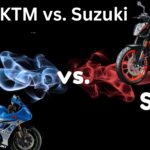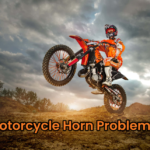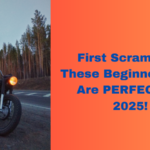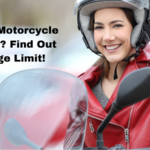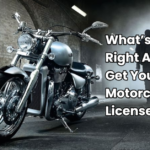Motorcycle camping is a unique way to blend the thrill of riding with the peacefulness of nature. As I prepare for my next trip, I always prioritize the right gear to make my adventure safe, comfortable, and memorable. No matter if you’re a seasoned motorcyclist or new to camping, success depends on having the right tools and knowledge. This guide covers everything for your motorcycle camping trip. It starts with picking the right tent and sleeping gear. Then, it shows you how to prepare your food and stay safe on the road.
Key Takeaways:
- Learn how to choose the right shelter, including tents and hammocks, based on your needs.
- Discover camping gear at various price points to match any budget.
- Find out how to pick sleeping bags with the right temperature ratings for different climates.
- Explore the most popular cooking equipment for motorcycle campers.
- Understand water filtration methods to ensure hydration during long trips.
- Master packing techniques to optimize space and safety when you’re on the road.
Introduction to Motorcycle Camping
Motorcycle camping is a thrilling way to connect with nature and escape the hustle of daily life. It offers the freedom of the open road combined with the relaxation of camping outdoors. This adventure is perfect for both seasoned campers and those new to the experience. The beauty of motorcycle camping is in its simplicity—light packing and easy setup let me hit the road with everything I need for a great time in nature.
However, the right preparation is essential for making the most out of your trip. Since you’re limited to carrying your gear on your motorcycle, efficiency is key. I focus on compact, lightweight gear that offers comfort and durability. Essentials are a small, easy-to-carry tent, a good sleeping setup, and portable cooking gear. These help me enjoy a warm meal outdoors.
Choosing the Right Tent for Motorcycle Camping
Selecting the right tent is one of the most critical aspects of a successful motorcycle camping trip. Comfort is key, and finding the perfect blend of portability, protection from the elements, and space is vital. Here’s a breakdown of the key considerations when choosing your tent:
Types of Tents: Backpacking vs. Standard
When it comes to tents, backpacking tents are the best option for motorcycle campers. They are made to be lightweight and compact. This design makes them easy to carry and comfortable. Models like the Copper Spur HV UL2 and the Tiger Wall UL3 are great options. They are strong and lightweight, which makes them perfect for motorcycle trips. On the other hand, standard tents are larger and heavier, which makes them less ideal for packing on a bike.
Size and Weight Considerations
For motorcycle camping, packing light is essential. I prefer tents that pack down small and are easy to carry, such as bikepacking tents or tarp tents. A tent like the Copper Spur HV UL2 is under 3 lbs and packs down to just 13”x7”, making it perfect for motorcycle trips. For a bit more space, the Blacktail Hotel Bikepack Tent offers ample room for a two-person setup but comes in at just over 7 lbs.
Weather Resistance Features
The weather can be unpredictable when camping, so it’s important to choose a tent that can handle rain, wind, and varying temperatures. I always opt for tents made from materials like nylon with silicone elastomer coating to keep moisture at bay. Double-wall designs reduce condensation. A strong rainfly keeps you dry on rainy nights.
Tent Model Comparison:
- Tent Model: Copper Spur HV UL2 Bikepack Tent
- Weight: Under 3 lbs
- Packed Size: 13” x 6”
- Capacity: 2 Person
- Price: Approx.
$599Tiger Wall UL3 Bikepack TentJust over 3 lbs13” x 7”3 PersonApprox. $499Blacktail Hotel Bikepack TentJust over 7 lbs14.5” x 8.5”2 PersonApprox. $399Kelty Late Start 2P Tent4.5 lbs16” x 7”2 PersonApprox. $249
A solid choice of tent can make or break your camping experience, providing shelter and peace of mind as you enjoy the outdoors.
Essential Gear for Motorcycle Camping
When preparing for a motorcycle camping trip, I focus on a few key categories of gear that ensure my safety, comfort, and enjoyment:
Key Categories of Camping Gear:
- Shelter: A compact, lightweight tent suited to expected weather conditions.
- Sleep Systems: A reliable 20-degree sleeping bag, sleeping pad, and inflatable pillow for warmth and comfort.
- Cooking Equipment: A portable stove, compact cookware, and non-perishable food options for meals.
- Water Filtration: A reliable water filter for ensuring clean water from natural sources.
- Navigation Tools: Maps, GPS, and a compass to plan routes and find my way on the road.
- First Aid Supplies: A well-stocked first aid kit and multi-tool for any unexpected situations.
How to Prioritize Your Gear List
To keep things efficient, I start by prioritizing the essentials—shelter, sleep, and cooking gear. Packing cubes help keep everything organized, and packing smart ensures I don’t overburden my bike. I also take care to avoid unnecessary items that can weigh me down.
Category: Must-Have Items
- Shelter: Compact tent, tarp, hammock
- Sleep Systems: Sleeping bag (20-degree), sleeping pad
- Cooking Equipment: Portable stove, cooking utensils, food
- Water Filtration: Hydrapak filter, reservoir bag
- Navigation Tools: Maps, GPS device, compass
- First Aid Supplies: First aid kit, multi-tool
Sleeping Systems for a Comfortable Night
A good night’s sleep is essential for a successful camping trip. I choose sleeping bags and accessories that are designed to maximize comfort and minimize bulk.
Types of Sleeping Bags and Their Ratings
The right sleeping bag depends on the conditions you expect. The Big Agnes Diamond Park series offers sleeping bags with ratings from 0 to 30 degrees, ensuring comfort in various climates. Whether I choose down or synthetic fill depends on the weight and warmth I need. Both are lightweight, making them ideal for motorcycle campers.
Sleeping Pads and Inflatable Pillows
An inflatable sleeping pad adds comfort by providing insulation from the cold ground. I recommend the UL80 Inflatable Sleeping Pad, which is compact and lightweight. Pairing it with an inflatable pillow like the ALUFT 2.0 enhances comfort and helps me sleep soundly on the road.
Sleeping System Recommendations:
-
- Item: Sleeping Bag (Down)
- Temperature Rating: 0, 15, 30 Degrees
- Fill Type: Down Fill
- Recommended Model: Big Agnes Diamond Park
-
- Item: Sleeping Bag (Synthetic)
- Temperature Rating: 0, 15, 30 Degrees
- Fill Type: Synthetic Fill
- Recommended Model: REI Co-op Trailbreak
-
- Item: Sleeping Pad
- Temperature Rating: N/A
- Fill Type: N/A
- Recommended Model: UL80 Inflatable Sleeping Pad
- Item: Pillow Temperature Rating: N/A Fill Type: N/A Recommended Model: ALUFT 2.0 Inflatable Pillow
Cooking and Food Preparation Essentials

Having the right cooking equipment makes a world of difference. I pack light, portable stoves and cookware to make meal preparation easy and efficient.
Cooking Gear: Stoves, Pots, and Utensils
A portable stove is essential for cooking while on the road. Models like the Jetboil and MSR are compact and easy to use. I also pack a titanium or aluminum cookware set for light yet durable cooking solutions. Don’t forget utensils and a way to store food, such as airtight containers or reusable silicone bags.
Food Options: Dehydrated Meals and Snacks
Dehydrated meals and energy-dense snacks are ideal for motorcycle camping. Meals like oatmeal with dried fruits, pasta, and stir-fry are easy to prepare with minimal ingredients. I also carry snacks like trail mix, jerky, and energy bars for quick nourishment on the go.
Water Filtration: Hydration on the Go
A water filtration system ensures I stay hydrated, even in remote areas. Portable systems like the Hydrapak filter let me drink safely from streams, rivers, or lakes. This means I don’t have to carry heavy water supplies.
Navigation Tools: Maps vs. GPS Devices
While technology makes navigation easier, I always carry both maps and a GPS device. Maps don’t rely on batteries, and they often offer a broader overview of my route. GPS devices, on the other hand, provide real-time updates and more precise directions. It’s essential to have both, especially in remote areas.
Navigation Tips:
- Use maps for planning and backup.
- Carry a GPS device for real-time navigation.
- Learn basic map and compass skills for off-grid travel.
First Aid and Safety Supplies
A good first aid kit is an absolute necessity. It should contain bandages, antiseptic wipes, pain relievers, and any personal medications you may need. Along with your first aid kit, carry tools like a multi-tool, flashlight, and a quality lock to secure your motorcycle.
Clothes and Personal Care Gear
Layering is key when it comes to motorcycle camping. To stay ready for changing weather, wear a breathable base layer, an insulating mid-layer, and a waterproof outer layer. Don’t forget hygiene items like sunscreen, bug repellent, and a travel towel.
Packing for Your Motorcycle Camping Trip
Efficient packing is essential when motorcycle camping. Use saddlebags and dry bags to organize your gear, and pack essential tools like a flat tire repair kit. You’ll want to balance weight and keep everything secure.
FAQs:
- What is the most essential gear for motorcycle camping?
- Key gear includes:
- A lightweight tent
- A sleeping system
- Cooking equipment
- A first aid kit
- Water filtration tools
- Key gear includes:
- How do I choose the right tent for motorcycle camping?
- Look for a compact, weather-resistant tent with a small packed size. A backpacking tent is usually the best option.
- What cooking gear should I bring?
- Bring a portable stove, lightweight cookware, and dehydrated meals or energy snacks. Don’t forget utensils and a way to store food.
- Is a first aid kit necessary for motorcycle camping?
- Yes! A first aid kit is essential for dealing with minor injuries and keeping yourself safe in remote areas.
- How should I pack efficiently for a motorcycle camping trip?
- Use saddlebags for heavier items, dry bags to keep gear dry, and compression bags to save space. Organize your gear for easy access.
- What personal care items should I bring?
- Essentials include sunscreen, bug repellent, toiletries, and a travel towel.
- How do I stay safe while motorcycle camping?
- Put on protective riding gear. Bring a maintenance kit for your motorcycle. Also, make sure you have emergency tools like a flashlight and a multi-tool.
- What are some must-have motorcycle camping accessories?
- Key accessories include a flashlight, bug spray, a multi-tool, a lock for your bike, and water filtration gear.
Conclusion
With the right gear and preparation, motorcycle camping is an adventure you’ll never forget. Pack light, stay organized, and focus on comfort and safety. This way, you’ll be ready for whatever the road brings. Camping in the wilderness or at a remote site? The right gear makes your trip smooth and enjoyable. Stay safe, stay comfortable, and make the most of your motorcycle camping journey!


